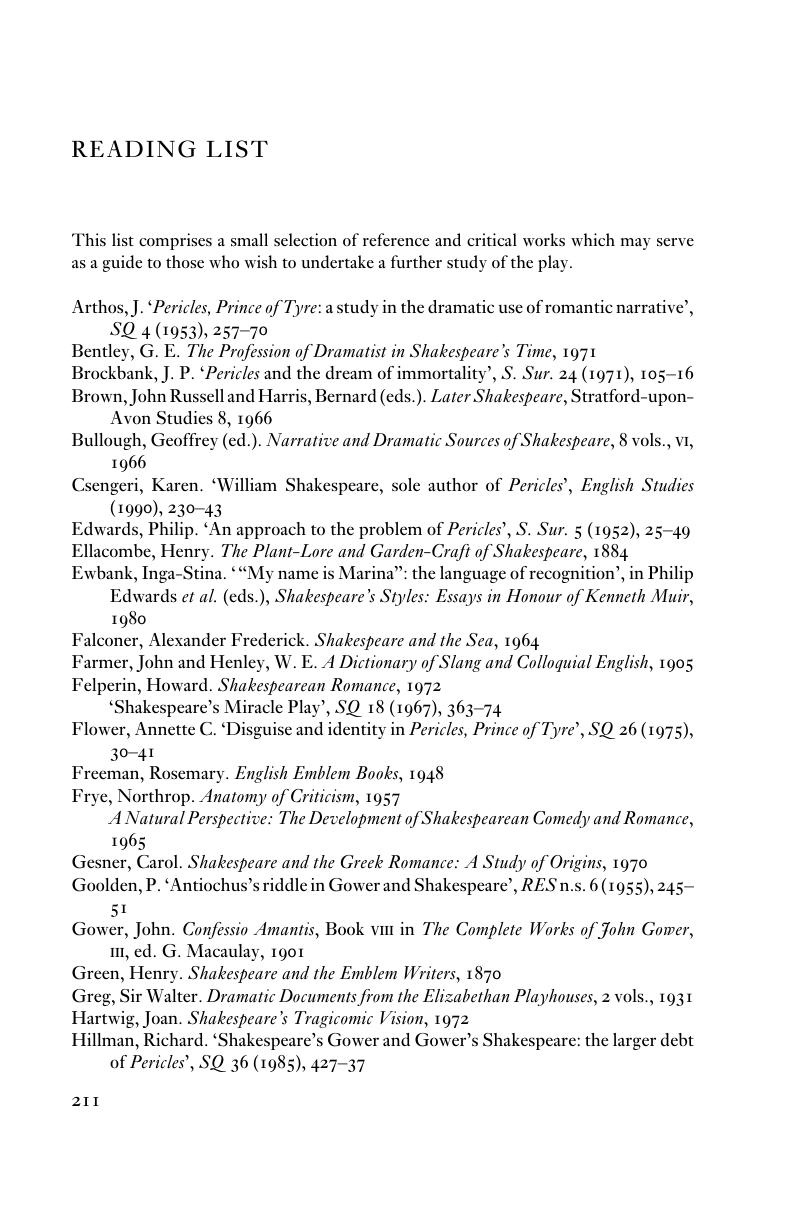Book contents
- The New Cambridge Shakespeare
- The New Cambridge Shakespeare
- Pericles, Prince of Tyre
- Copyright page
- Contents
- Illustrations
- Preface and Acknowledgements
- Abbreviations and Conventions
- Figures
- Introduction
- Note on the text
- Pericles, Prince of Tyre
- Supplementary notes
- Textual Analysis
- Reading List
- References
Reading List
Published online by Cambridge University Press: 16 August 2019
- The New Cambridge Shakespeare
- The New Cambridge Shakespeare
- Pericles, Prince of Tyre
- Copyright page
- Contents
- Illustrations
- Preface and Acknowledgements
- Abbreviations and Conventions
- Figures
- Introduction
- Note on the text
- Pericles, Prince of Tyre
- Supplementary notes
- Textual Analysis
- Reading List
- References
Summary

- Type
- Chapter
- Information
- Pericles, Prince of Tyre , pp. 211 - 213Publisher: Cambridge University PressPrint publication year: 1998



